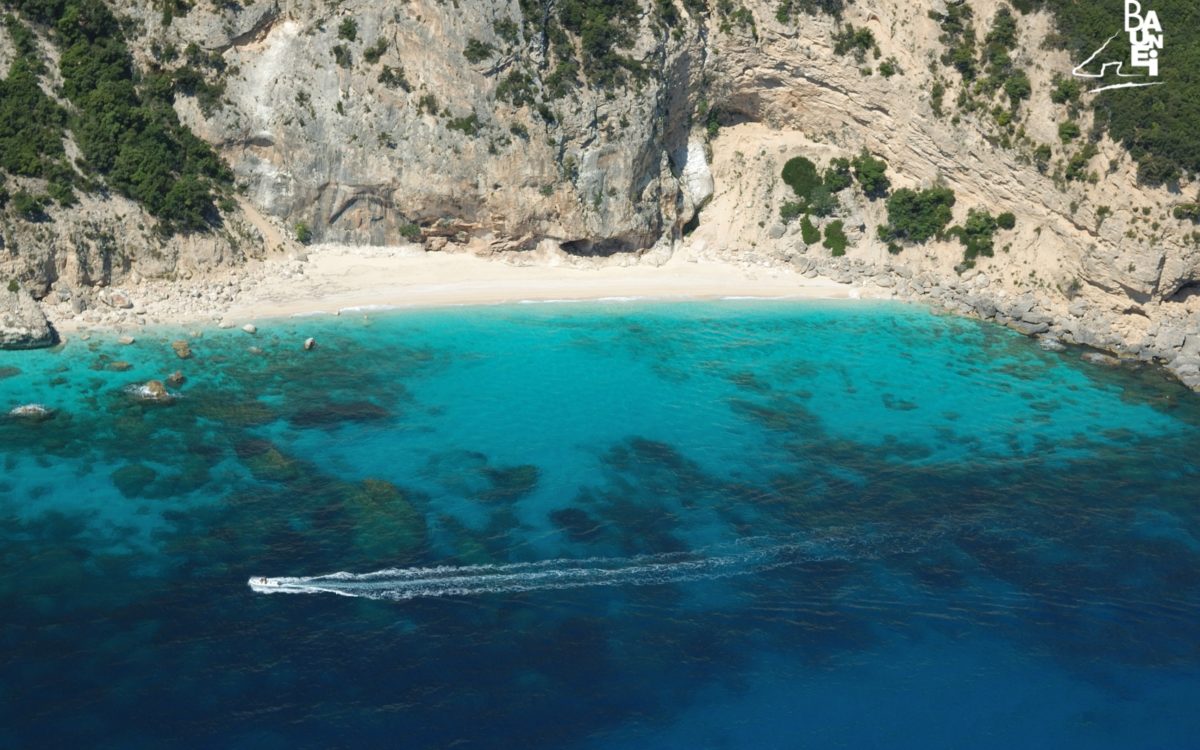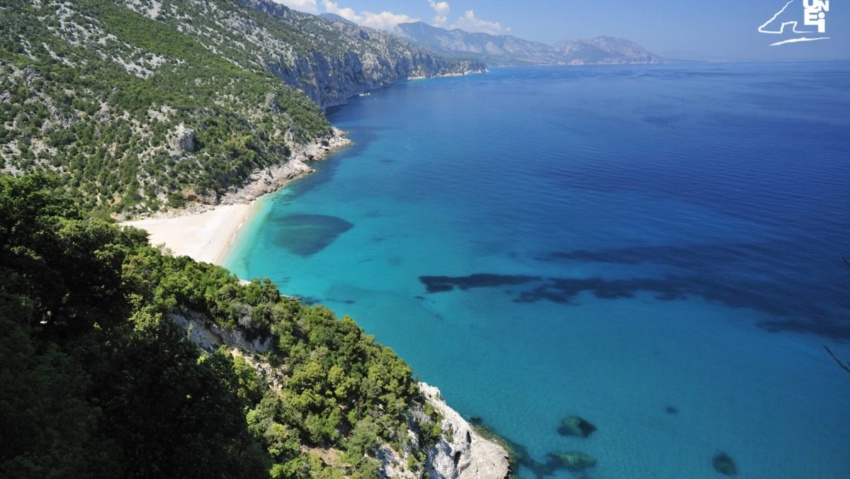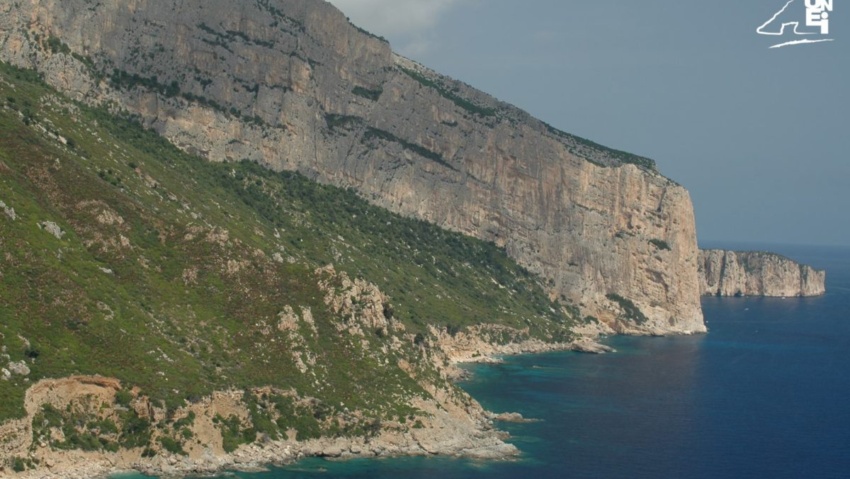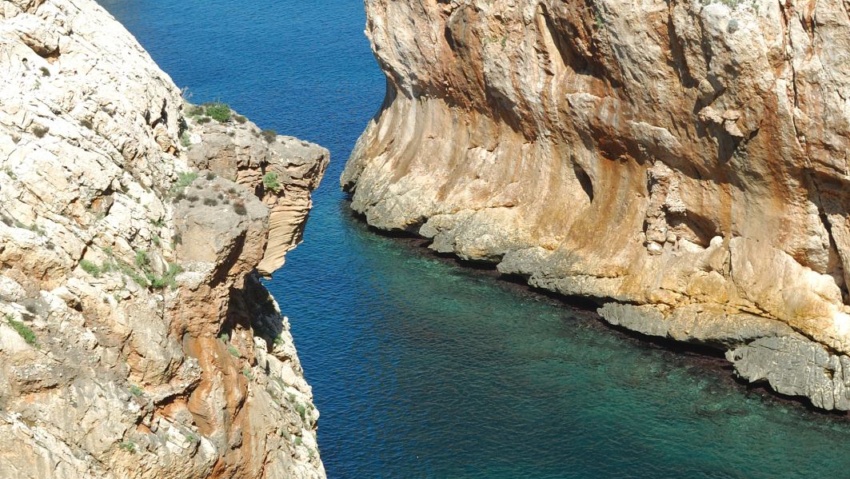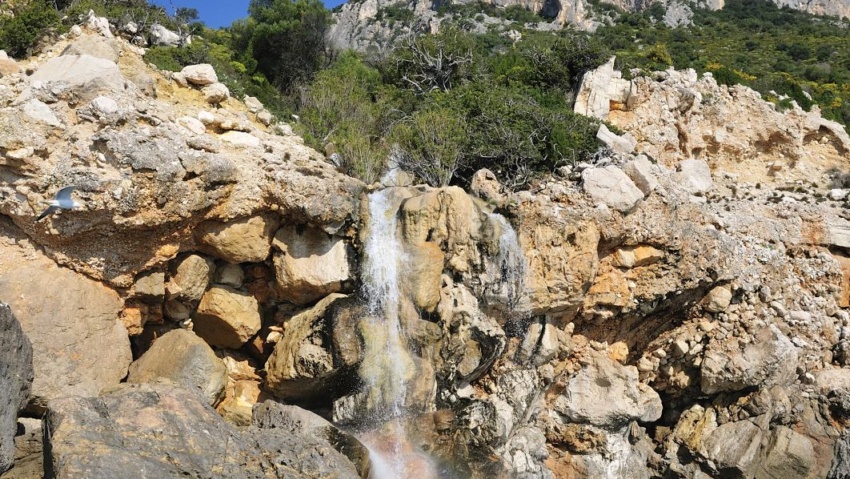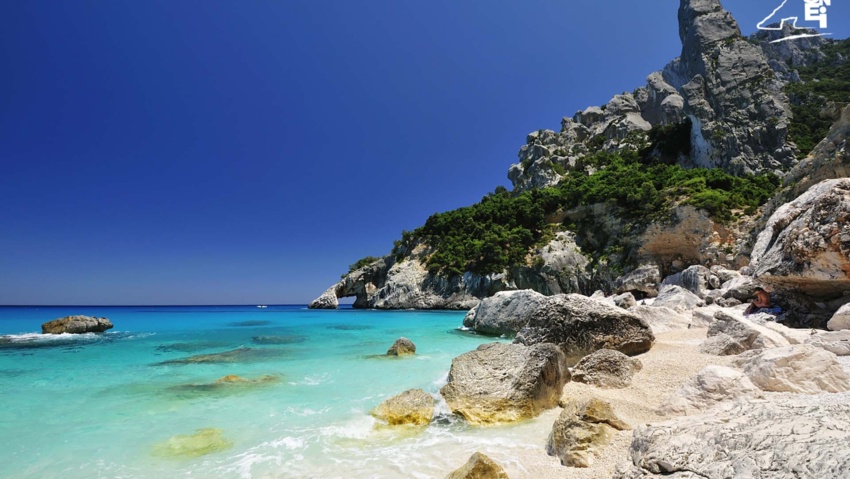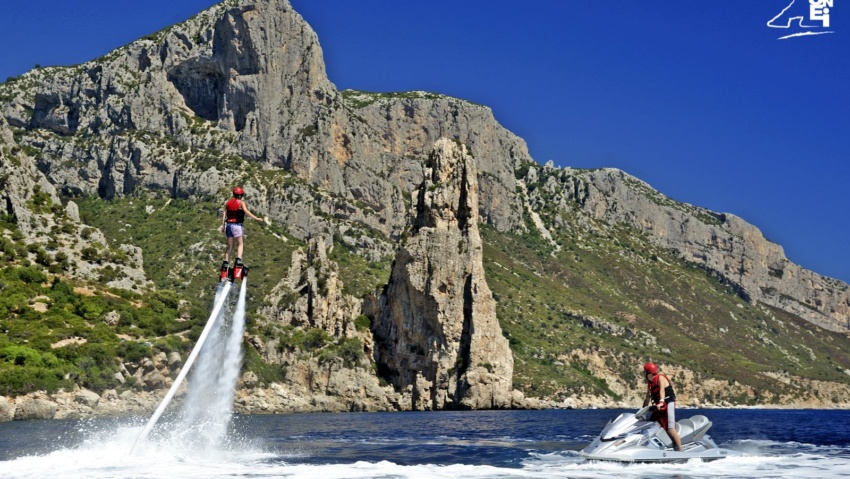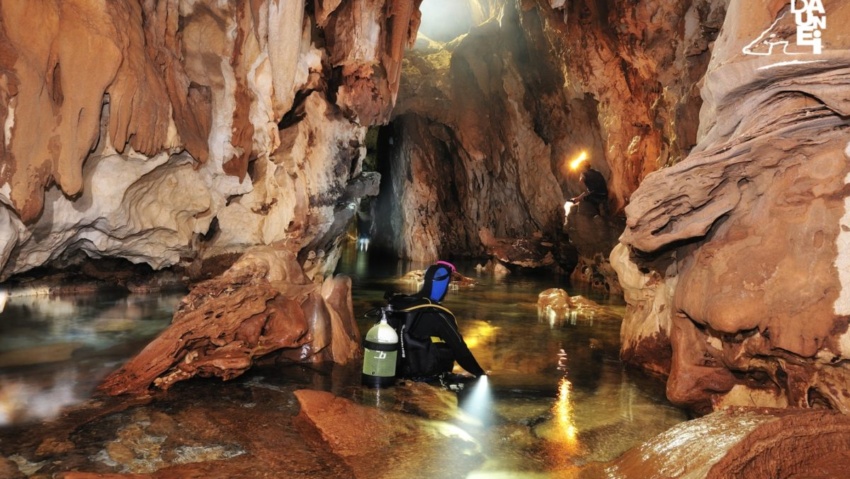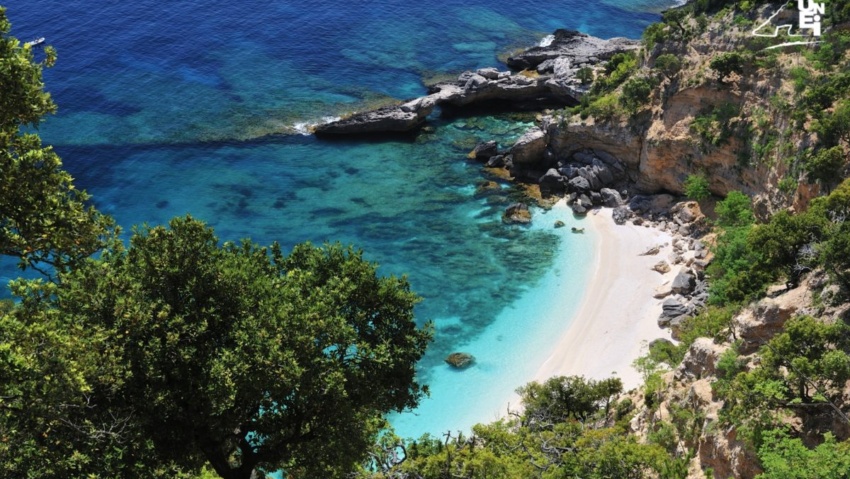Cala dei Gabbiani (Seagull Cove)
North of Goloritzè and the small beach “of the Springs”, the cliffs recede leaving room for a broad detrital slope covered by the thick “Ispuligidenie” forest, framed by the limestone ridge of the “Serra ‘e Lattone” mountain. It is possible to reach the forest by land, starting from the of Golgo plateau (at “Piredda”) and following the recently positioned signs for hikers who decide to take on the challenging route (3 to 4 hours’ walk) without being accompanied by expert guides. It is worth remembering that cases of imprudent hikers that get lost in the Baunesis Supramonte in an attempt to reach the beaches from inland are not uncommon. The first beach on the way northwards, a few hundred metres after “of the Springs”, is called “Cala dei Gabbiani”. The beach, about 250 metres in length, owes its name to the fact that every evening around sunset dozens of seagulls gather. It is one of the favourite beaches for boaters because the large boats that shuttle back and forth between the beaches on the coastline do not stop there, so it is consequently less crowded, even in high season. The beach “of the Seagulls”, like the one in Goloritzè, is made up of white pebbles that have been smoothed by the waves, with at seafloor that is rocky and becomes deep immediately. This is a particular type of sandy shores, known as “landslide”, since it originates from landslide material that has been modelled by the waves and currents. The type of beaches that are created at the mouths of rivers and streams thanks to the progressive accumulation of debris transported by rivers are different. The name “Cala dei Gabbiani” was recently created, in truth because on the nautical charts, this beach and the one that follows to the north (now known by the dual name of “Ispuligidenie – Cala Mariolu”) are indicated by the same name of “Ispuligidenie”. Indeed, the huge flat boulder that limits “Cala dei Gabbiani” to the north is referred to as “Punta Ispuligi” on the charts. On this rock that slopes gently towards the sea, called “Sa Pedra ‘e Su Curadore” by Baunesis herdsmen, were moored the merchant ships onto which coal produced in loco by coal men (who worked in the “Ispuligidenie” forest until 1953) was loaded. Up the path and entering a little into the forest, it is still possible to find the lay- bys where the coalmen prepared the stacks of wood which were then covered with earth; a fire was lit in a hole purposely left on the top of “kiln”, so that a few days of burning could complete the carbonisation process.
